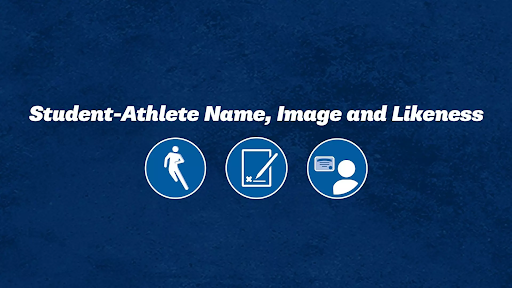Ever since the NCAA started allowing college athletes to profit from their Name, Image, and Likeness (NIL) rights in 2021, there has been a shift in how collegiate sports operate.
On the surface, it seems like a great idea — student-athletes finally get compensated for their hard work and the revenue they generate for their schools. However, it’s becoming clear that NIL might be ruining collegiate sports as we know it.
Instead of focusing on academics and teamwork, many athletes are now chasing endorsement deals and money. This change has raised a lot of concerns about fairness, the integrity of the game, and the future of college sports.
One of the biggest problems with NIL is that it creates a major imbalance in college sports. In the past, all athletes were on a somewhat level playing field — everyone got a scholarship, and that was about it. Now, the biggest stars can rake in millions of dollars through endorsement deals, while other athletes get little to nothing.
Take former Alabama quarterback Bryce Young, for example. Even before starting a single game for Alabama, Young reportedly signed deals worth nearly $1 million. Meanwhile, athletes in smaller sports like track, swimming, or gymnastics aren’t getting the same attention or opportunities.
This huge gap in earnings can lead to resentment among teammates and could damage the sense of unity and teamwork that college sports are supposed to be about.
“I think players should be paid fairly regardless of talent because most sports are team sports, and college should be collaborative and not individualized,” said Eryn Andruchowitz, sophomore.
Another issue with NIL is that it’s causing athletes to make decisions based on money, rather than what’s best for their development or education.
In the past, athletes chose colleges based on things like the quality of the program, the coaching staff, and the school’s academics. But now, NIL opportunities are becoming a big factor in their decisions.
“I think NIL has become a top three factor in recruiting because star players want to earn as much money as they can while developing to get to the next level,” said Andruchowitz.
We’ve seen athletes transfer to schools that offer better deals, or even turn down offers from top programs because they can make more money elsewhere. For example, the University of Miami’s football program made headlines when billionaire booster John Ruiz signed several of the team’s top recruits to massive NIL deals.
This has raised questions about whether athletes are picking schools for the right reasons, or if they’re just following the money.
Some argue that NIL has turned college athletes into professionals, which completely changes the nature of collegiate sports.
College sports were once a place where athletes played for the love of the game, to represent their school, and to earn an education. Now, it feels like college athletes are simply chasing profits, and in some cases, they’re being treated like pros before they’ve even played a game.
“A lot of players, especially in college football and basketball, commit to colleges for NIL regardless of the talent and fit of the program,” said Brody Overton, senior.
The pressure to land big deals and maintain a public image can also distract athletes from their academic responsibilities. It’s easy to imagine how the pursuit of money and fame could make student-athletes lose focus on their studies and long-term goals.
Additionally, NIL could worsen recruiting problems.
Schools with bigger budgets and wealthier alumni networks now have an even greater advantage in recruiting top talent.
With the rise of NIL collectives, which are groups of boosters pooling money to offer recruits lucrative endorsement deals, the balance of power in college sports is shifting even more towards the wealthiest programs. This makes it even harder for smaller schools to compete.
“Schools in the SEC have way more money than smaller colleges like G5 (Group of five) teams, making an uneven playing field,” said Overton.
Take Texas A&M, for example, which signed the top-ranked recruiting class in 2022, with many players rumored to have received big NIL deals as part of their decision to commit.
While these types of deals might not be illegal under NIL rules, they definitely raise questions about fairness and the future of recruiting in college sports.
Supporters of NIL argue that athletes deserve to be compensated for the millions of dollars they generate for their schools, and that’s a valid point.
College athletes, especially in major sports like football and basketball, bring in massive revenue through ticket sales, merchandise, and TV deals. But we have to ask ourselves: is the purpose of college sports to make money, or is it to help student-athletes grow, learn, and prepare for their futures?
With NIL, the focus seems to be shifting towards the former, and that’s a problem.
Another consequence of NIL is that it’s making it harder for schools to manage their athletic programs. Coaches now have to worry about more than just training and game strategies — they also have to deal with players’ business ventures, endorsement deals, and the influence of outside agents.
For instance, Alabama head coach Nick Saban made headlines when he publicly criticized the NIL system, claiming that it’s leading to a “free agency” type environment in college sports. According to Saban, schools with the most resources will dominate, while others will struggle to keep up.
“NIL is literally free agency but in college because colleges can pay for the best players and some players hop to other schools if they aren’t getting paid enough,” said Overton.
Furthermore, NIL deals are creating a situation where players might start to care more about their brand than their team.
In sports, the most successful teams work together to achieve a common goal. However, if players are more concerned with building their personal brands or landing big sponsorships, they might prioritize their own interests over the team’s success.
Imagine a player choosing to sit out an important game to avoid risking an injury that could jeopardize a sponsorship deal — this is exactly the kind of conflict NIL could create.
In conclusion, while NIL has some benefits for student-athletes, it’s also causing a lot of problems that threaten the future of college sports.
The focus is shifting away from education and teamwork and moving towards money and endorsements. It’s leading to unfairness, increasing the pressure on athletes, and creating an environment where the wealthiest schools have the upper hand.
If things continue in this direction, college sports as we know them might be completely transformed — and not for the better.
As NIL continues to develop, the NCAA needs to seriously consider its long-term impact and whether this is the direction they want collegiate sports to go.

My name is Andrew, and I will produce the most entertaining content for my fans. I will write about anything and everything. (Trust me I’ve tested it.)

Leave a Reply